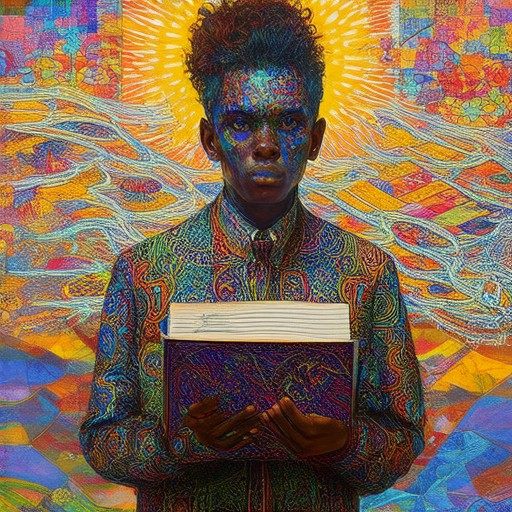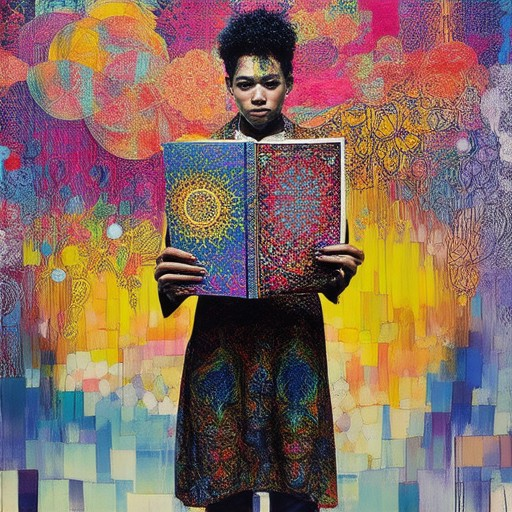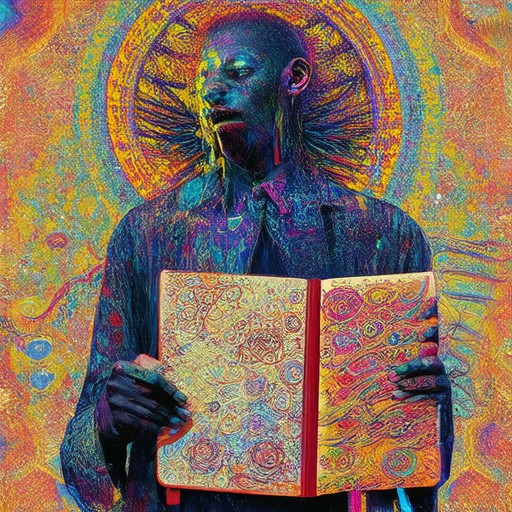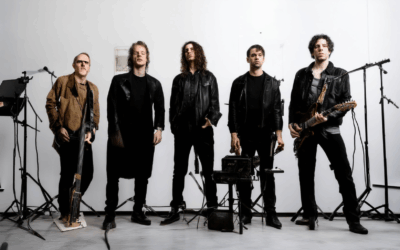Creating a memorable album cover is one of the most critical aspects of music production, as it often serves as the first impression for listeners. Whether you’re an aspiring musician or a seasoned producer, crafting an album cover that stands out requires careful thought, creativity, and a deep understanding of design principles. From vibrant color schemes to bold typography, every element plays a role in making your album cover unforgettable. This guide explores essential tips, tools, and design secrets to help you create an album cover that not only captures your artistic vision but also resonates with your audience. By mastering the techniques outlined in this comprehensive resource, you’ll be equipped to design covers that leave a lasting impact, elevating your music to new heights of popularity and recognition.
Key Takeaways
– Simplicity and Clarity: A memorable album cover balances simplicity with legibility, ensuring the title and artist name stand out.
– Visual Appeal: Captures attention through striking visuals, innovative design, and a cohesive style that matches the music’s tone.
– Meaningful Artwork: Reflects the artist’s vision and the album’s essence, evoking emotion or storytelling to connect with listeners.
– Typography: Features prominent, well-chosen fonts that complement the design without overwhelming the viewer.
– Color Palette: Enhances the cover’s appeal with a strategic use of colors that align with the album’s emotional tone.
– Artistic Integrity: Stays true to the artist’s style and the album’s theme, avoiding overly styled designs.
– Payment Ranges: Varies from $150–$500 for emerging artists, $500–$2,500 for mid-level professionals, and $3,000+ for established designers.
– Album Rarity Factors: Includes limited editions, special features, artist popularity, condition, regional pressings, collectible status, pressing variations, and nostalgia.

How to Make a Memorable Album Cover
To create a memorable album cover for Oedipus Band, focus on combining visual appeal with brand consistency. Here’s a step-by-step guide:
- Reflect Your Brand Identity: Use colors, fonts, and imagery that align with your music’s vibe. For Oedipus Band, consider bold, vibrant hues or minimalist designs that resonate with your sound.
- Choose a Distinctive Font: Opt for a clean, readable font that stands out without overwhelming the design. Sans-serif fonts like Montserrat or Roboto are great choices for clarity and modernity.
- Aim for Minimalism with Depth: A well-crafted minimalist design can make your cover memorable. Use negative space creatively or incorporate subtle textures to add complexity without clutter.
- Incorporate Symbolic Elements: Add symbols or icons that represent your music’s theme or emotions. For example, use abstract shapes or geometric patterns to evoke a sense of energy and movement.
- Work with a Designer: Collaborate with a graphic designer who understands your vision. Tools like Canva offer user-friendly options for creating professional-looking covers without advanced design skills.
- Ensure Thumbnail Friendliness: Design elements should remain clear and impactful when reduced in size. High contrast and bold visuals are key for readability in smaller formats.
- Resonate with Your Audience: Tailor the design to appeal to your target demographic. Rock enthusiasts might appreciate gritty textures, while indie fans could favor more experimental and artistic styles.
- Stay Inspired but Unique: Draw motivation from successful album covers but ensure your design feels original. Avoid copying competitors; instead, let your creativity shine while staying true to your brand.
- Test Across Platforms: Check how the design looks on various mediums like physical CDs, vinyl, and digital platforms. Adjustments may be needed for each format to ensure consistency and impact.
The Best Program for Designing Album Covers
When it comes to designing album covers, having the right tools can make all the difference. Here’s a breakdown of the top programs available:
- Canva – A user-friendly and versatile tool ideal for creating professional-looking album covers. Canva offers a wide range of templates tailored for music releases, allowing you to customize colors, fonts, and layouts with ease. Its free version is a great option for beginners, though upgrading to the paid plan unlocks more advanced features.
- Paint.NET – Known for its intuitive interface, Paint.NET is a solid choice for those looking for free alternatives to high-end software. While it lacks some of the advanced features of Adobe Illustrator or Photoshop, it’s perfect for simple yet effective designs.
- Adobe Illustrator CC – For professionals, Adobe Illustrator is the go-to tool for vector-based designs. Its robust features and customization options make it excellent for creating intricate and visually stunning album covers, though it requires a significant learning curve.
- Photoshop CC – Another Adobe staple, Photoshop is ideal for photographers and designers who need extensive editing and retouching capabilities. Its layering and masking tools are invaluable for creating layered album cover designs.
Choosing the right tool depends on your skill level and project requirements. For quick and stylish designs, Canva is hard to beat. For more complex projects, Adobe Illustrator or Photoshop offer unparalleled control. Regardless of your choice, experimenting with color theory and typography can greatly enhance the overall aesthetic of your album cover.
Looking for more resources? Check out our comprehensive guide on music marketing for tips on creating eye-catching visuals that resonate with your audience.

Is There a Free AI to Create Album Covers?
Yes, there are several free AI tools available that can help you create professional-looking album covers. These tools leverage artificial intelligence to assist musicians and creators in designing visually appealing artwork efficiently. Below are some of the most popular options:
- Venngage : A user-friendly AI album cover generator that allows you to create personalized designs quickly. With a range of customizable templates and styles, Venngage is ideal for artists looking to bring their vision to life without prior design experience.
- Canva : While primarily known for graphic design, Canva offers a feature called “Magic Design” which uses AI to generate album covers based on your input. It’s a great option for those who want more control over the design process.
- Fotor : Another excellent choice, Fotor’s AI-powered tool simplifies the creation of album covers by offering a variety of templates and automatic design suggestions. It’s perfect for musicians who want a modern and sleek look.
- Album Cover Maker : This tool specializes in AI-driven album cover generation, offering a wide selection of styles and customization options. It’s a solid choice for those seeking simplicity and creativity in one package.
Each of these tools provides unique features and customization options, allowing you to create album covers that stand out. Whether you’re aiming for a minimalist look or something more elaborate, there’s likely a free AI tool that fits your needs. Explore these options today and elevate your album artwork with ease!

What Makes an Album Cover Successful?
An album cover’s success hinges on several key factors that work together to create a lasting impression. Here’s a breakdown of what contributes to a standout album cover:
- Simplicity and Clarity : A successful cover often relies on simplicity. Avoid cluttered designs; focus on clean layouts that allow the artwork and typography to shine. Legibility is crucial, ensuring the album title and artist name remain clear, even when viewed as a thumbnail.
- Visual Appeal : The cover must grab attention quickly. This could mean a striking color palette, innovative design elements, or a unique artistic style that resonates with the target audience. The cover should feel cohesive and consistent with the music’s tone and style.
- Meaningful Artwork : The artwork should reflect the artist’s vision and the essence of the album. It should evoke emotions or tell a story that connects with listeners. Thought-provoking or thoughtfully ambiguous art can leave a lasting impact.
- Typography : The font choice and layout of the text play a significant role. The title and artist name should be prominent yet not overpowering, ensuring they complement the overall design rather than compete with it.
- Color Palette : The use of color can enhance or detract from the cover. A vibrant, contrasting palette can draw the eye, while a muted, cohesive color scheme may convey a different mood. The choice should align with the music’s emotional tone.
- Artistic Integrity : The cover should authentically reflect the artist’s style and the album’s theme. It should feel purposeful and well-crafted, avoiding designs that seem forced or overly styled for marketing purposes.
By balancing these elements, an album cover can become more than just a wrapper—it can become a meaningful representation of the music and an enduring visual icon. Link to article
How Much Do You Get Paid for an Album Cover?
The payment for designing an album cover can vary significantly based on several factors, including the artist’s experience, the complexity of the design, and the platform where the album will be released. Here’s a general breakdown of typical rates:
- Emerging Artists: $150–$500 – This tier typically includes newer designers or those with a smaller portfolio. Rates are often lower due to limited experience and client base.
- Mid-Level Professionals: $500–$2,500 – Designers with a few years of experience and a growing portfolio usually fall into this range. They may handle more complex projects and have a stronger client base.
- Established Professionals: $3,000–$10,000+ – Highly experienced designers with significant recognition in the industry tend to charge higher rates. Their work is often sought after, and they may take on high-profile projects.
These figures are averages and can fluctuate based on the specifics of the project, such as the artist’s visibility, the platform (e.g., digital vs. physical releases), and the scope of the design work required. Always negotiate and clarify payment terms upfront to ensure alignment with both parties’ expectations.

What Makes an Album Rare?
An album can become rare due to several factors:
- Limited Edition Pressings : Albums that were pressed in small quantities, especially during their initial release, tend to become rare over time. Labels may limit the number of copies to boost value.
- Special Features : Unique variants such as colored vinyl, alternate artwork, or bonus tracks can make an album highly sought after.
- Artist Popularity : Albums from well-known artists, particularly those that are out of print or in poor condition, are often considered rare.
- Condition : Mint-condition copies of rare albums can significantly increase their value.
- Regional Pressings : Some albums were only released in specific countries, making them rare outside their original region.
- Collectible Status : Albums associated with historical movements or influential artists can gain rarity due to their cultural significance.
- Pressing Plant Variations : Certain presses, known for high-quality production, can make albums rarer if they were produced in smaller batches.
- Nostalgia Factor : Albums that evoke strong emotions or memories, such as those from a particular era or scene, can become rare as people seek to relive those moments.
Explore our curated collection of rare albums to discover unique finds and investment opportunities.



0 Comments